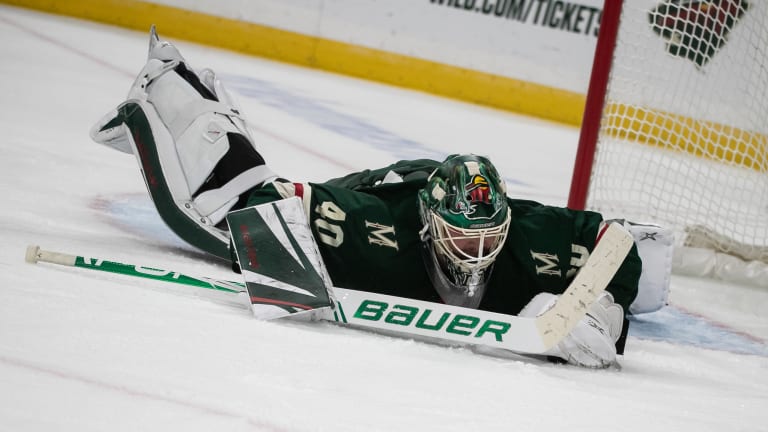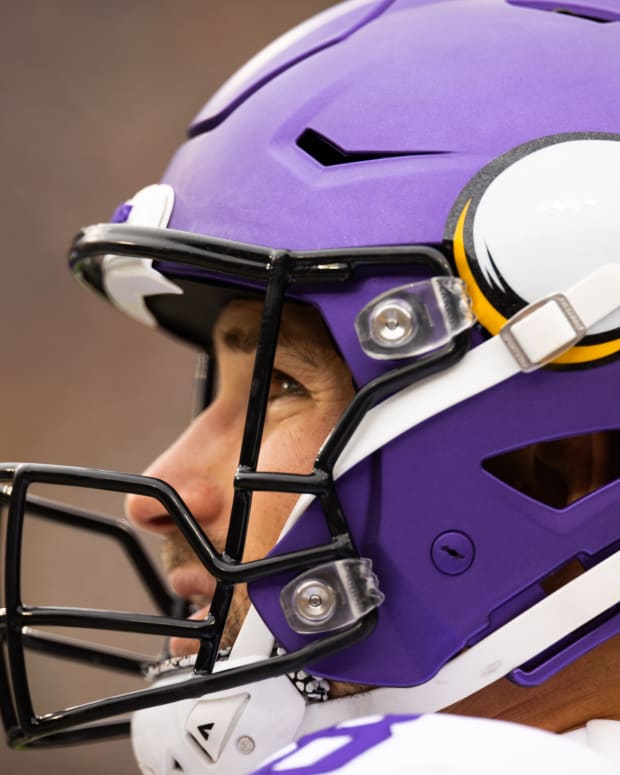
Zone Coverage: Don't expect Wild to sign big-name goalie in free agency

This story first appeared at Zone Coverage and was re-shared through a collaboration with Bring Me The News.
Everyone knows that the Minnesota Wild have significant needs this offseason.
Two of the most important things that Bill Guerin brought up in his season-ending press conference were the need for a No. 1 center and for the goaltending to unequivocally be better in the next season. While a big-name free-agent signing or trade are viable options to acquire a center, they should not be shopping for a big name goalie this offseason.
BACKLOG OF GOALTENDERS
Unless there is a way to move Minnesota’s highest-paid goaltender, Devan Dubnyk, this will be the primary obstacle for Guerin in acquiring a new goaltender. While just over $4 million per year is on the lower end for No. 1 goaltenders, Dubnyk’s numbers plummeted below backup range this season.
It’s fair to recognize that he was dealing with a lot of things off the ice that may have affected his performance, like his wife’s health situation, but his numbers were still not up to what they were when he had a career renaissance upon arriving in Minnesota in early 2015. Among goaltenders with at least 10 games played in 2019-20, Dubnyk had a 0.890 save percentage, the 62nd best in the NHL out of 66 qualified netminders. He also had a 3.35 goals against average last season — again 62nd out of 66 qualified goalies in that category.
Guerin is going to have a tough time trading Dubnyk given his age, 34, recent performance and contract — one more year at $4.33 million — especially with the flat $81.5 million cap for the next two years.
Alex Stalock could function as a backup at his salary and performance, but he became the de facto No. 1 this season. But the biggest factor here is reigning AHL goaltender of the year Kaapo Kahkonen.
Signing or trading for a bigger name goaltender will almost undoubtedly come with more than just one year on the deal. If Guerin and the rest of the hockey operations department believe Kahkonen is the next franchise goaltender, getting a player in his prime for a few more years would create an unnecessary logjam.
It would hold back Kahkonen’s growth against NHL talent. Right now it’s hard to project his success because he has only played in five NHL games. Because Stalock is signed for the next two seasons, another NHL-ready goaltender would severely stunt Kahkonen’s path to becoming a franchise goaltender.
DOLLAR BILLS
Minnesota has more cap room than in many recent years with roughly $14 million to go around early in the offseason. That number may be higher than Wild fans are used to, but much of that money is realistically already tied up into players on the roster. The Wild need to re-sign both restricted free agents Luke Kunin and Jordan Greenway.
On top of that, Minnesota has a bevy of contracts that expire after the 2020-21 season, including no-brainer retentions Kevin Fiala, Marcus Foligno and Kirill Kaprizov. And the team will likely retain Joel Eriksson Ek and Ryan Hartman as well.
If the Wild sign a free-agent goalie, like Robin Lehner, he will command at least $5 million per year, but should be more based on his success in both Chicago and Vegas. Given he signed a one-year contact prior to this past season, he will also want a longer-term contract at 29 years old. Committing to a goaltender like Lehner with so much of the current and future core of the team up for re-signing in a year is definitely a gamble.
A trade is less about the short term money, but still for the long term it would hurt both against the flat cap and against development. Take fellow Vegas goaltender Marc-Andre Fleury for example. If the Wild traded for Fleury, they would assume his contract with two more years at $7 million. For someone who is 35, this would be a short-term stopgap to keep Minnesota competitive for two years. Minnesota would definitely be giving up a significant piece in return to mostly balance the money, but the goaltending situation beyond 2022 would be a complete mystery.
HOW DOES THIS AFFECT ACQUIRING A NO. 1 CENTER?
With each of the contracts needing to be re-signed, plus the acquisition of a No. 1 goalie, that would make almost certain that the team intends to develop a long-term No. 1 center from within the roster and be without this role for another year. Unfortunately, there doesn’t look like a financially feasible way to get the proven No. 1 goalie as well as getting the franchise-altering center.
Guerin and the rest of the Wild’s top decision-makers have a lot to think about this offseason for the product on the ice. There are plenty of avenues to explore, but this goalie situation is going to be the hardest of all to solve properly.










